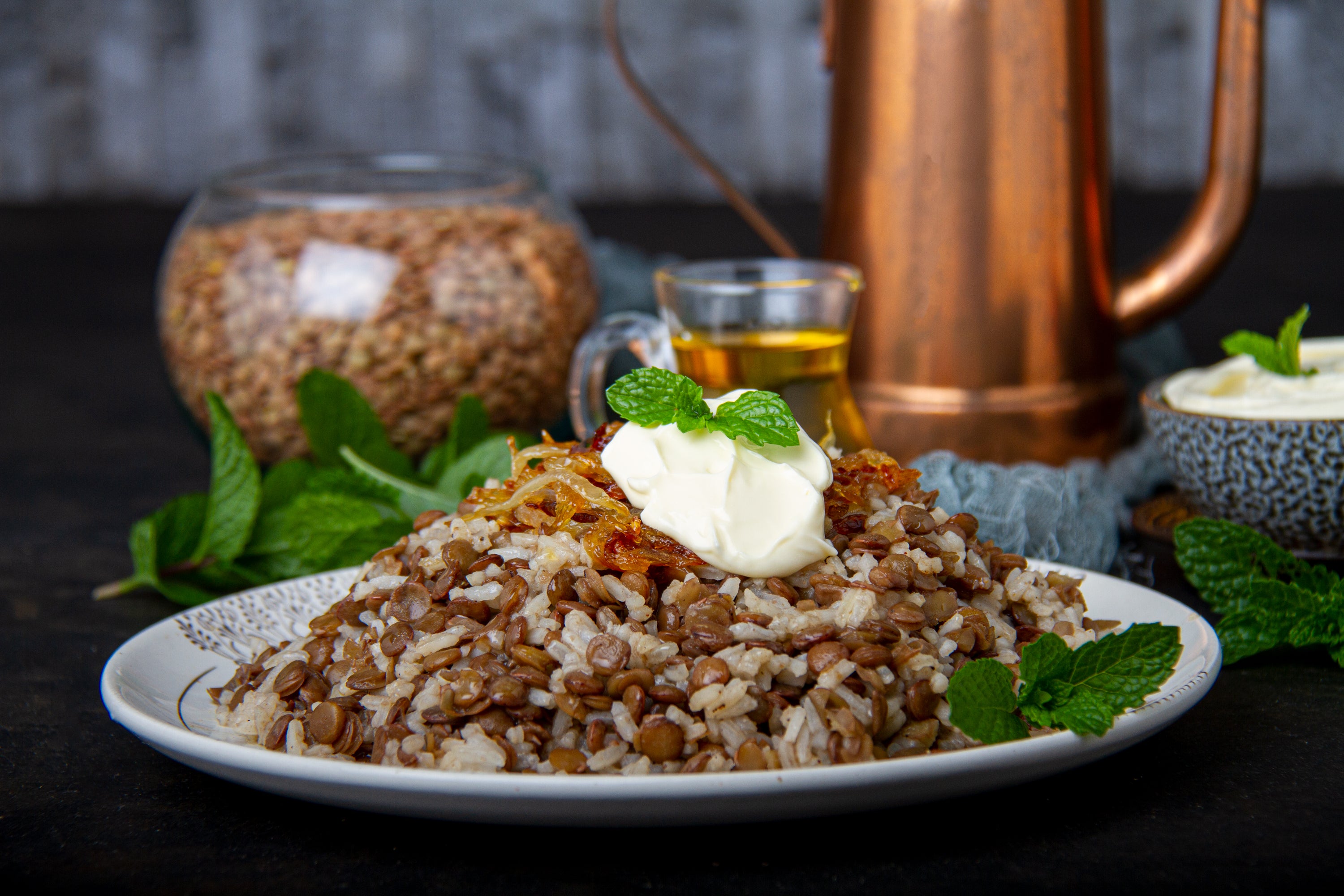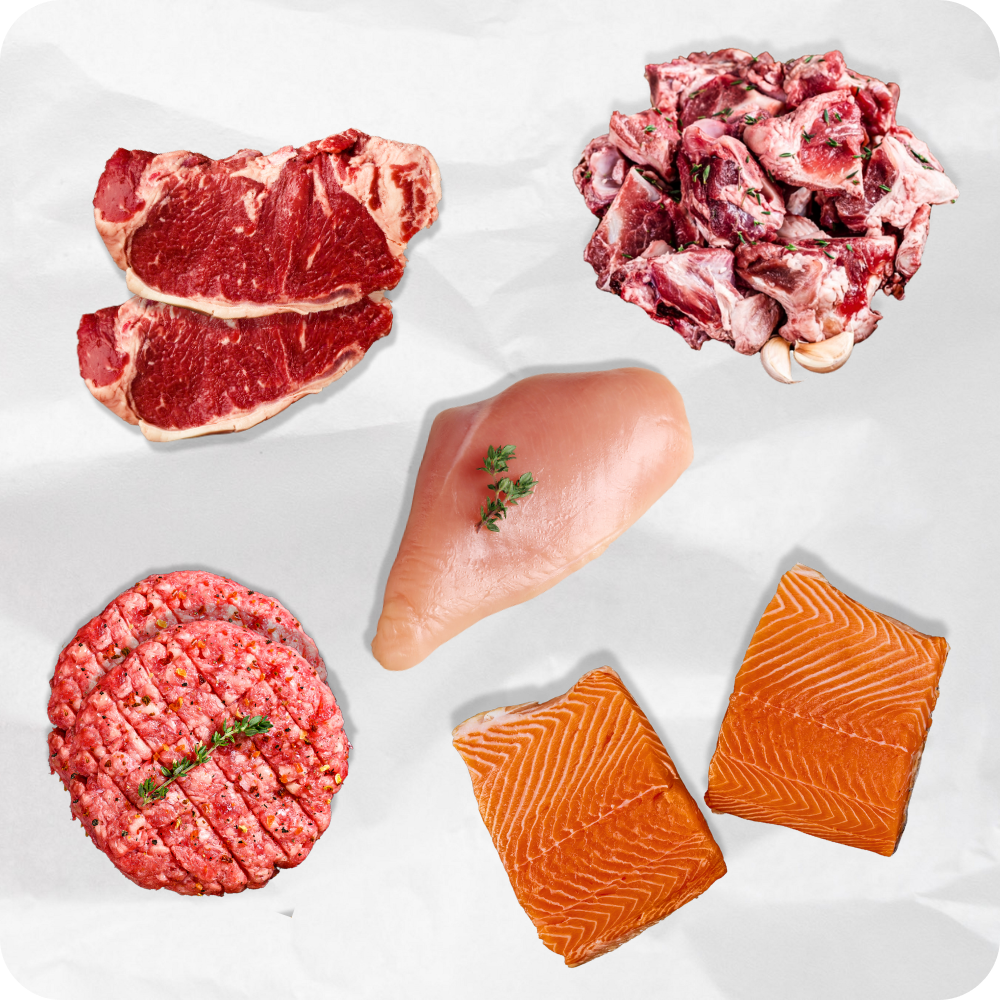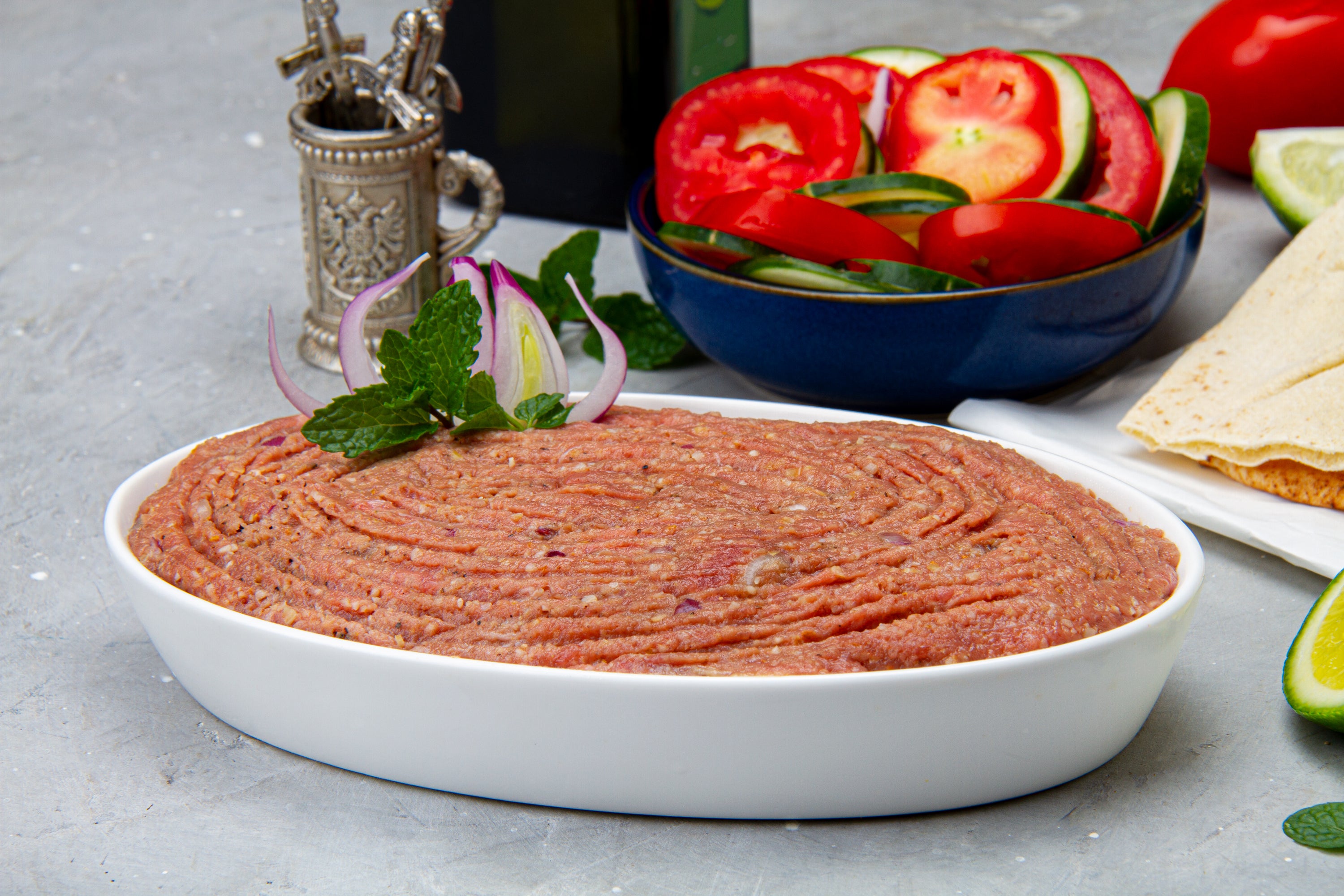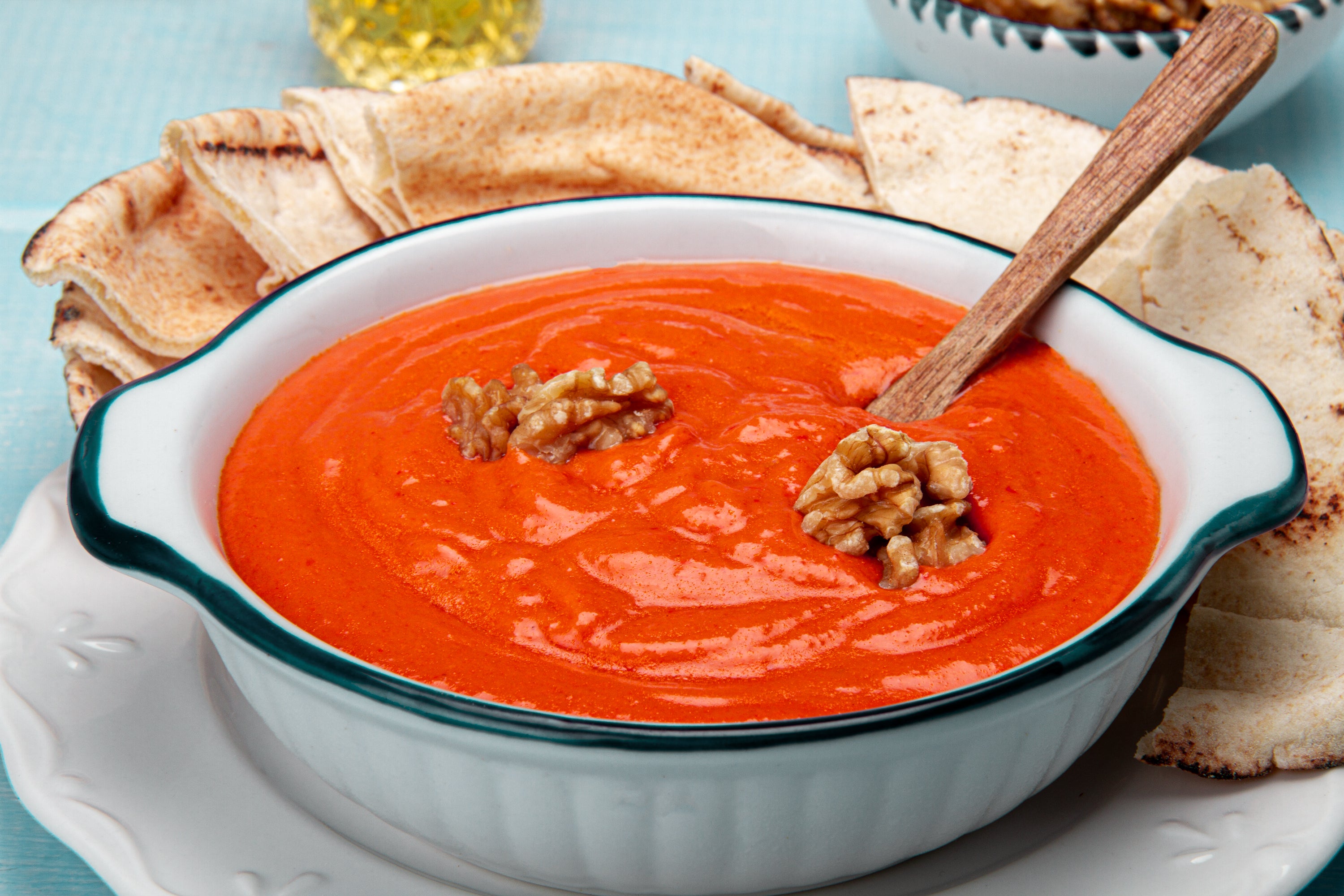
MUJADDARA: LENTILS, RICE, AND CRISPY ONION
Mujaddara is the most famous rice preparation in the Middle East. It is a cheap and yielding dish. In fact, in many countries, the region has been dubbed as "the dish of the poor" since it does not contain meat or nuts, and all its ingredients are very cheap. Which makes it an accessible plate for all pockets. These characteristics made the dish spread rapidly through many countries, achieving worldwide fame.
The word "Mujaddara" means "full of small holes" or "full of holes". This refers to the way the lentils look inside the rice. But despite this unique name, we can assure you that Mujaddara is delicious and full of textures. Of course, unless you are vegan, Mujaddara is not the main dish. It works very well as a companion to other meat-based preparations, particularly lamb.
There are many variations of the Mujaddara. For example, the lentils that we use in our recipe are brown, but they can be green, and also to rice, it is possible to include semolina or bulgur. The caramelized onion in olive oil is mandatory. A good part of caramelized onions on the plate is unrivaled.
History of the Mujaddara
Mujaddara is an extremely ancient dish, and it is difficult to attribute its creation to one person, or even a particular country. Many countries claim to have created it. But this is very difficult to ensure. In the Kitab al-Tabikh (cookbook), written in 1226, by Mohammed bin Hassan al-Baghdadi, the first recipe for Mujaddara is recorded in Iraq. This first version of the recipe differs from the current one, in that it contained minced lamb meat.
It is also known that the Arabs in the Middle Ages prepared a recipe without meat, more like our traditional mujaddara.
In a passage of the Torah, it is narrated that Jacob serves a plate of red stew to his twin brother Esau. In exchange for the latter giving him the right of inheritance from him. Possibly that lentil dish was a variant of the current Mujaddara.
Particularly in Israel and other Jewish communities in the Middle East, Mujaddara is widely consumed, especially on days when meat cannot be eaten. So, it is also a highly appreciated dish among vegans and vegetarians today.
There are many variations of this dish. As we already said, there are those who use different types of lentils, green, red, or black. The cooking of the lentils can also vary. In some versions, the lentils are cooked until they melt, and once they have been pureed, they are mixed with the rice. Wheat, semolina, or couscous also serve as variations of Mujaddara. The well-browned onion is the common ingredient in any of these cases. There are those who substitute olive oil for clarified butter or ghee.
Here we wanted to make the most popular and simple version of Mujaddara, rice, brown lentils, and lots of caramelized onions.





Leave a comment
This site is protected by hCaptcha and the hCaptcha Privacy Policy and Terms of Service apply.